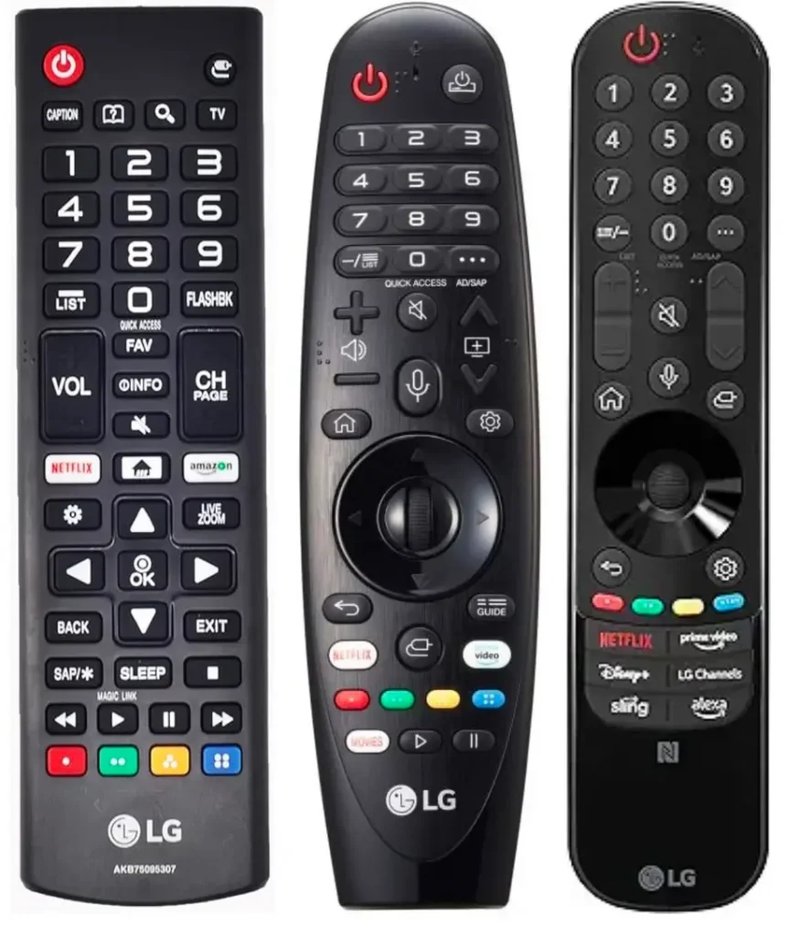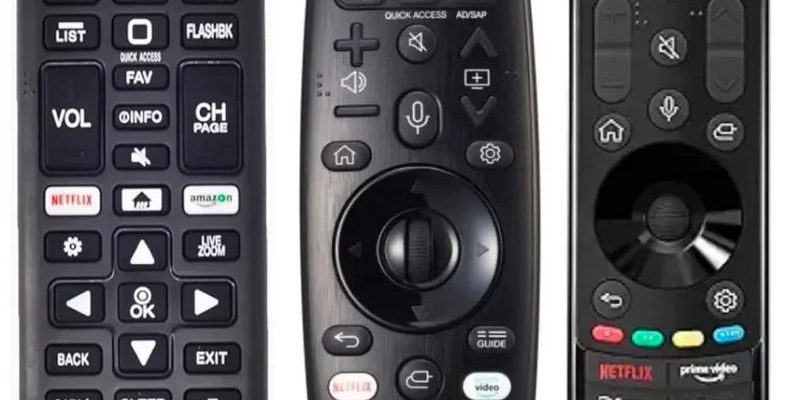
The magic (or headache) of home entertainment setups is that sometimes gadgets from the same brand talk to each other like best friends, and other times…well, let’s just say it’s more like strangers passing in the hallway. LG soundbar remotes are made for, surprise, LG soundbars, but there’s a lot of curiosity about their compatibility with smart TVs—especially as more TV models offer fancy features and flexible control options.
So, let’s sit back, untangle this remote-control puzzle, and see what actually works, what needs a workaround, and where you might want to call in some backup. Whether you’re hoping to simplify your coffee table clutter or just tired of juggling three remotes during movie night, I’ll walk you through the real deal behind LG soundbar remotes and smart TVs.
How LG Soundbar Remotes Communicate: The Basics
Alright, let’s break it down. Your LG soundbar remote doesn’t send secret messages by telepathy (although, wouldn’t that be nice?). Instead, it uses good ol’ infrared (IR) light—kind of like a flashlight that your devices can “see,” but you can’t. When you press a button, the remote flashes a specific signal, and your soundbar listens in and responds.
Now, here’s the thing: **smart TVs** often come with their **own remotes** and their own unique “language.” Some remotes use IR, while others use Bluetooth or even Wi-Fi. This is kind of like everyone speaking different dialects at a family reunion. Sometimes, if the brands or technologies match up, you might get extra compatibility, but it’s not a guarantee.
If your LG soundbar remote is purely IR-based (most are), it can usually only control devices that are programmed to understand those same IR commands. That’s why, unless your smart TV is set up to recognize LG’s soundbar remote codes, it probably won’t respond. But don’t worry—there are a few exceptions and tricks that can help.
Can You Directly Control a Smart TV With an LG Soundbar Remote?
Here’s the honest truth: **most LG soundbar remotes are designed to control the soundbar, not the TV.** You might find a few buttons labeled “TV Power” or “Input,” and it’s tempting to think you’ve hit the jackpot. However, those buttons usually work only if your TV understands LG’s standard remote codes, or if you sync up the devices in a special way.
For LG smart TVs, there’s sometimes an overlap. If both your TV and soundbar are LG, you might be able to control **basic functions**—like volume or power—directly from the soundbar remote. This is often called **”LG Sound Sync”** or **”Simplink (HDMI-CEC)”**. It lets your TV and soundbar kinda “team up” and respond together, as long as you’ve paired them properly.
But what if your smart TV is Samsung, Sony, or another brand? That’s where things get tricky. Most non-LG TVs won’t recognize the soundbar remote without some sort of **universal code** or extra setup. You might need to use your TV’s remote for everything outside of volume and mute, which can still be managed via HDMI-CEC if it’s supported on both your TV and soundbar.
HDMI-CEC: The Secret Sauce for Syncing Controls
Let me explain this little-known hero—**HDMI-CEC** (Consumer Electronics Control). Imagine all your devices holding hands and agreeing to work together. When you connect your soundbar to your smart TV using an HDMI cable (specifically into the “ARC” or “eARC” port), and both support HDMI-CEC, your TV remote can control the soundbar’s volume and sometimes power. In some cases, your soundbar remote can send basic commands to your TV as well, but this is less common.
Here’s how it looks in real life:
- You connect your LG soundbar to your smart TV with an HDMI cable (ARC/eARC).
- You enable HDMI-CEC on both devices. On LG, it’s called Simplink. On Samsung, look for Anynet+; Sony calls it BRAVIA Sync.
- Once enabled, you can use your TV remote to control both the TV and soundbar volume, power, and sometimes input.
But—**the LG soundbar remote itself rarely controls all the TV’s smart features**. It’s more of a one-way relationship, with the TV remote being the boss. So, while HDMI-CEC helps reduce remote clutter, the soundbar remote won’t fully replace your smart TV’s remote unless both devices are programmed for that.
Pairing and Programming: Trying to Sync Remotes With Codes
You might be wondering, “Can I program my LG soundbar remote to work with my TV using some kind of code?” Here’s where universal remotes come in. LG’s own soundbar remotes aren’t typically programmable the way a true universal remote is. They’re designed out of the box to talk to soundbars, end of story.
However, some higher-end LG soundbars throw in a universal-ish remote, which lets you pair or sync with your TV by entering a manufacturer code or following a pairing process. You’ll usually find a little code sheet in the manual (pro tip: don’t lose it, or you’re in for a Google rabbit hole).
Let’s be honest; it’s a bit hit or miss. Sometimes it works and you get to control basics like power and volume, sometimes not. If you’re serious about ditching extra remotes, an actual **universal remote** (think: Logitech Harmony, GE, or RCA) is your best bet—they’re designed with flexible code libraries and can sync, reset, or re-pair as needed.
If your coffee table looks like a remote control graveyard, a universal remote might be your hero. But just plugging in manufacturer codes might not give you full smart TV control from an LG soundbar remote alone.
Common Problems and Troubleshooting Tips
Of course, nothing in home tech works 100% of the time. Let’s talk about what can go wrong—and how to fix it (without needing a degree in rocket science).
Problem 1: The soundbar remote controls the soundbar but not the TV. This usually means the TV doesn’t recognize the remote’s signal. Double-check you’ve set up HDMI-CEC on both devices. If it’s still not working, the TV probably doesn’t support soundbar remote codes.
Problem 2: The remote suddenly stops working. Nine times out of ten? It’s the battery. Pop in some fresh ones. If that doesn’t work, try resetting the remote or un-pairing and re-pairing the devices (if your model supports it).
Problem 3: Volume controls are laggy or jumpy. Sometimes the remote signal gets blocked (even your cat stretching on the table can be the villain here). Make sure the IR sensor on both devices isn’t blocked, and you’re not too far away.
Problem 4: TV power button doesn’t work via soundbar remote. Not all TVs allow this, especially if they’re a different brand. If you really want all-in-one control, consider switching to a universal remote, which you can code and sync for multiple brands.
Alternatives: Universal Remotes and Smartphone Apps
Here’s a wild card—did you know you can control a bunch of home devices with just your phone? There are **smartphone apps** (like LG’s ThinQ or manufacturer-specific apps) that turn your phone into a remote for TVs, soundbars, and even refrigerators if you’re feeling fancy.
Universal remotes, as we touched on earlier, are the MVP for mixed-brand homes. With the right code or pairing sequence, they can control just about anything: TV, soundbar, streaming box, even old DVD players. It takes a bit of patience to get them programmed, but it might finally let you retire some of those dusty old remotes.
Some new smart TVs and soundbars even support voice assistants like Alexa or Google Assistant. With a little setup, you could be changing the channel or turning up the volume using just your voice—pretty futuristic, huh?
Why Compatibility Matters for Everyday Use
You might be thinking, “Why should I care if one remote does it all?” Take it from someone who’s lost more hours than I want to admit searching for the “right” remote: **remote compatibility is about convenience and sanity**.
When your LG soundbar remote seamlessly talks to your smart TV, life’s just easier—less clutter, less confusion, fewer missing remotes between the couch cushions. But relying on brand-specific remotes can lock you into one ecosystem, and not all features play nicely together. If you love mixing brands or upgrading pieces over time, future-proofing with HDMI-CEC, universal remotes, or smart app solutions can save you major headaches.
Here’s an analogy: it’s like having one key that unlocks every door in your house. Sure, you could carry a giant keyring, but wouldn’t it be nicer to keep things simple and streamlined?
Wrapping Up: Finding the Right Remote Balance
So, do LG soundbar remotes work with smart TVs? Sometimes yes, often with limitations, and almost always better if your TV is also LG or you’ve set up HDMI-CEC. For most basic controls like volume and power, you’ll probably get by. If you want true harmony (pun intended), you may want to think about universal solutions or smart apps that can sync and pair across all brands.
At the end of the day, don’t stress if your LG soundbar remote can’t do it all—just knowing your options sets you up for smoother Netflix nights and less tech frustration. Try different setups, see what fits your lifestyle, and don’t be afraid to mix in new tech when it makes things easier. Your living room (and your sanity) will thank you.
